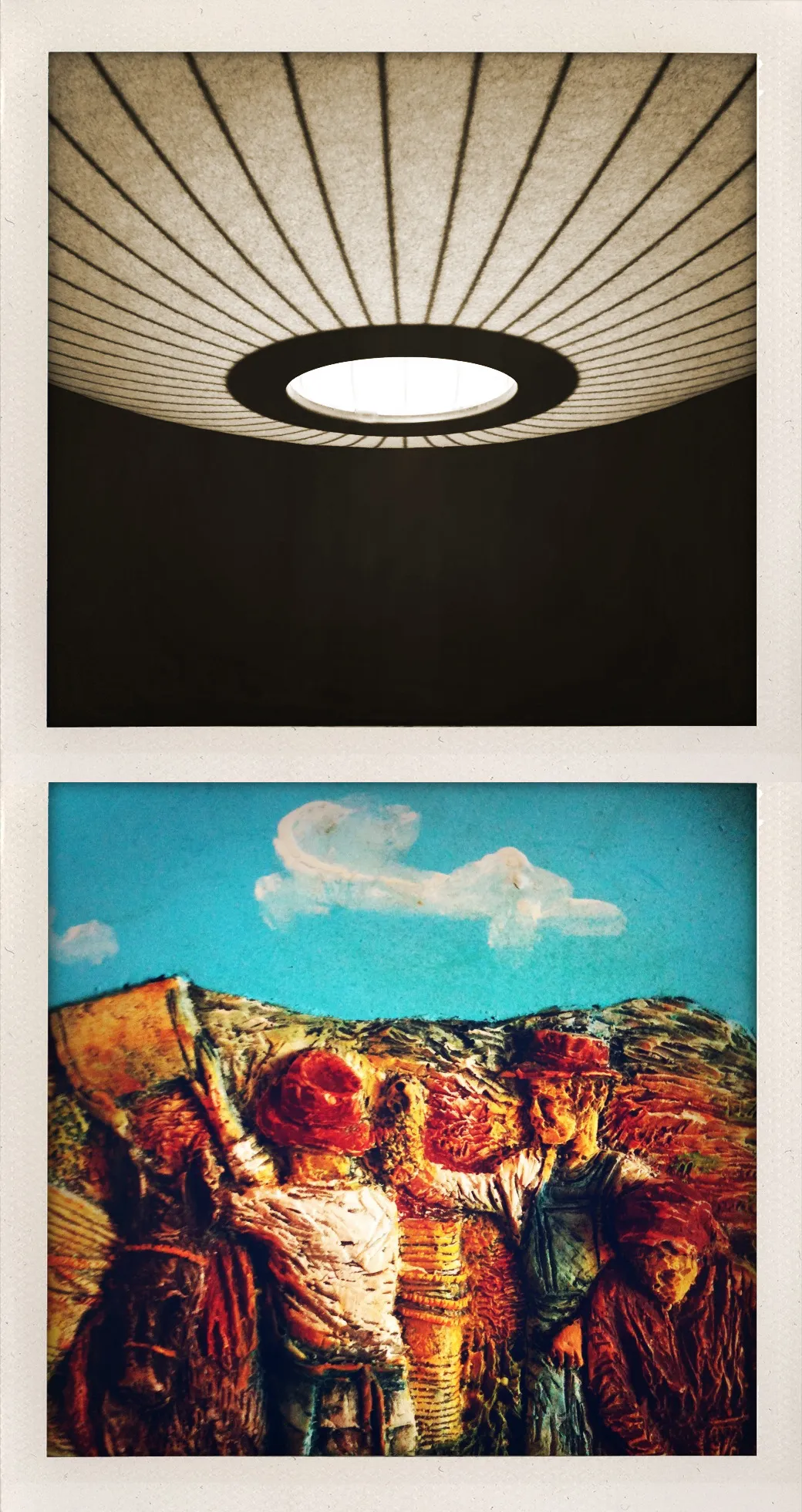Kansas

Kansas juxtaposes a stark ceiling light with a textured pastoral scene to examine divine oversight and agrarian labor. The diptych invites reflection on how mythology, surveillance, and history shape regional identity.
The diptych titled Kansas engages the viewer in a visual and conceptual dialogue between transcendence and toil, surveillance and sustenance. Presented in a vertically stacked format, the two square panels suggest a cosmological relationship: the heavens above, the earth below. This spatial structure provides an interpretive scaffold for a work deeply rooted in the visual and ideological languages of the American Midwest.
The upper image presents a stark, almost abstract view of a circular ceiling light photographed from below. Radiating lines extend outward from the central aperture, resembling a stylized sun or an iris. The visual economy of the form—monochrome, geometric, centered—evokes not just architectural minimalism but a symbolic omnipresence. The source of illumination is manufactured, yet its symmetrical composition and unyielding gaze suggest something older: the enduring trope of an all-seeing eye. In the context of Midwestern religiosity and rural life, this presence can be read as divine, celestial, or institutional—an authority figure watching over the land and its inhabitants.
In contrast, the lower panel is tactile, colorful, and grounded. It depicts three figures engaged in what appears to be agricultural labor or discussion. Rendered in sculptural relief with deep grooves and vibrant hues—rust, ochre, and sky blue—the figures appear to emerge from the land itself. The style echoes the visual language of WPA-era murals and folk reliefs, embedding the scene in a historical narrative of collectivism and resilience. The thick, almost carved textures evoke both the physicality of the terrain and the human effort required to cultivate it. This is not an idealized landscape, but one shaped by endurance and labor.
Together, the panels stage a dialogue about surveillance and stewardship, myth and materiality. The top frame hovers with dispassionate authority, while the lower image hums with human presence and historical resonance. The eye/light above becomes a metaphorical overseer, real or imagined, divine or technological. Below, the workers do not look up—they are absorbed in their task, suggesting either faith in the unseen or indifference to its watch.
The title Kansas anchors the work in a specific geography often portrayed through dual lenses: mythologized heartland and contested terrain. As both breadbasket and battleground—ideologically, agriculturally, spiritually—Kansas occupies a central space in American identity. This image reframes that space not as neutral ground, but as a stage upon which power, belief, and memory play out. The format of the diptych itself reinforces this tension, offering a visual theology: heaven scrutinizing earth.
Photographically, the Polaroid-style framing and muted tones suggest documentation and nostalgia, but the constructed nature of both images complicates that association. The upper light is artificial, the lower scene sculpted or painted, not captured. These are not mere recordings of reality but mediated representations, drawing attention to the tools and choices behind image-making. In this way, Kansas becomes not just about the place, but about how the place is seen, surveilled, and remembered.
By placing symbolic abstraction in dialogue with textured realism, Kansas invites viewers to reconsider the narratives we assign to landscape and labor. The diptych resists easy romanticization, instead offering a layered meditation on divine presence, historical myth, and the enduring rhythms of rural life. It is a work that stares back—quietly, watchfully—at the very forces that shape a people and a place.
Essay written: May 2025